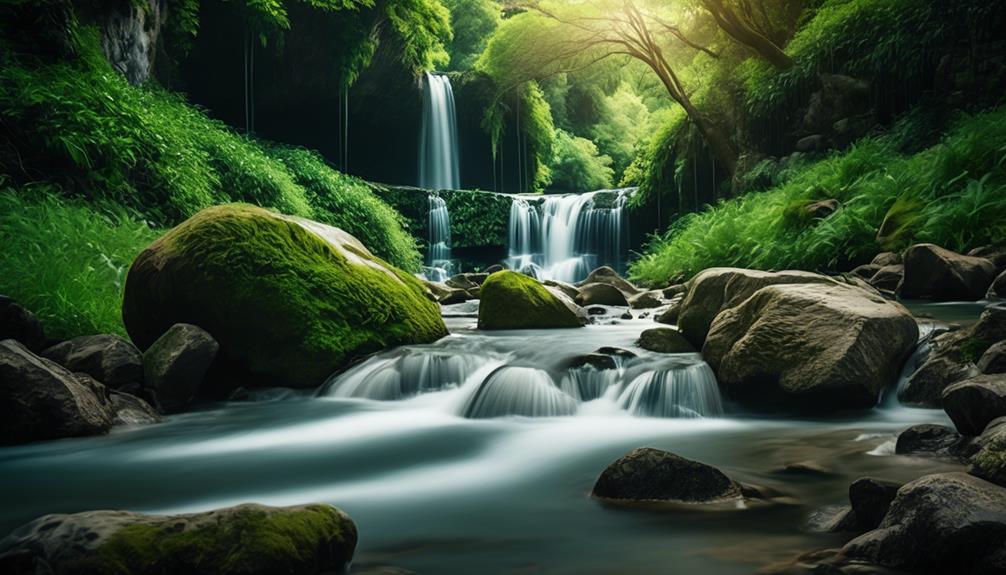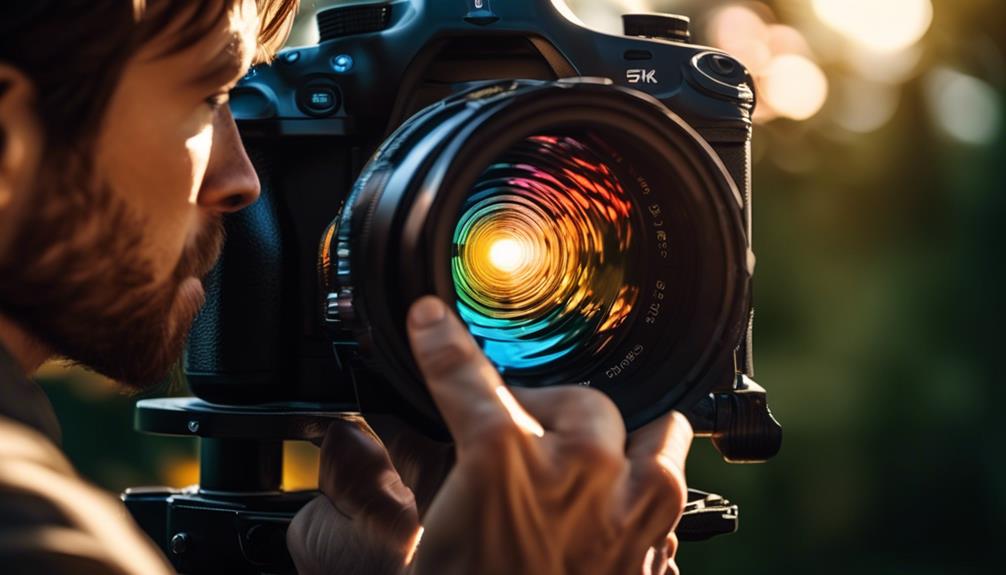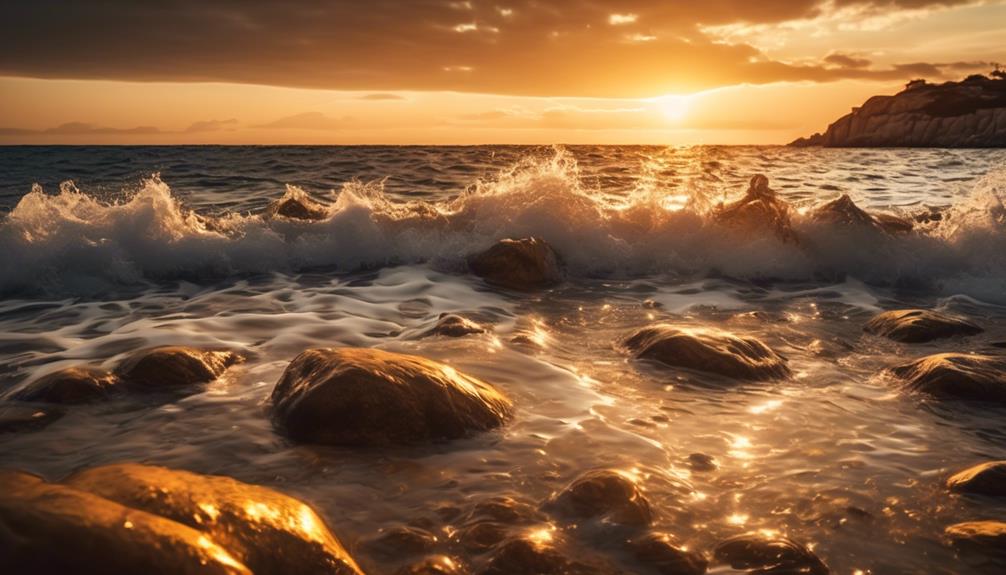Please note this post may contain affiliate links picked by me (Jay) that I have deemed may be of interest or relevant to you the reader of this.
These links do not affect the cost of the thing if you decide to purchase but i may get a little money if you choose to purchase.
For more information on my affiliate link policy click here.
As a photographer, I've always found that capturing the perfect shot is like chasing a fleeting ray of sunlight. It's that quest for the ideal balance of light and shadow that led me to discover the remarkable world of ND filters.
These unassuming pieces of glass may appear inconspicuous, but their impact on photography is truly transformative. From achieving flawless exposures to unlocking the mesmerizing beauty of long exposure photography, ND filters have become an indispensable tool in my creative arsenal.
But that's just the beginning. So, if you're ready to take your photography to new heights, join me on this journey as we explore the myriad reasons why ND filters are a game-changer in the world of image-making.
Key Takeaways
- ND filters allow you to control the amount of light entering your camera, helping you achieve a balanced exposure in challenging lighting conditions.
- By using ND filters, you can capture the movement of water and create a smooth effect, adding a dynamic and dramatic touch to your images.
- ND filters are useful for achieving a shallow depth of field in bright conditions, allowing you to blur the background and make your subject stand out.
- Long exposure photography can be enhanced with the use of ND filters, enabling you to capture mesmerizing effects such as silky smooth waterfalls, streaking clouds, and light trails.
Understanding ND Filters
Understanding ND filters is essential for photographers looking to enhance their creativity and achieve stunning visual effects in their photographs. ND filters, or Neutral Density filters, are a valuable tool in the world of photography, offering a range of benefits that can take your images to the next level.
One of the primary benefits of using ND filters is their ability to control the amount of light entering the camera. This is particularly useful for landscape photography, where the dynamic range between the bright sky and the darker foreground can often be challenging to capture. By using an ND filter, you can balance the exposure and achieve a more even tonal range, resulting in a well-exposed image with rich details in both the highlights and shadows.
Another advantage of ND filters is their ability to create long exposure effects. By using a filter with a high density, such as a 10-stop ND filter, you can effectively lengthen the exposure time, even in bright daylight. This is especially useful for capturing the movement of water, creating a smooth and ethereal effect. It also allows you to capture the motion of clouds or create streaks of light in urban night photography, adding a sense of dynamism and drama to your images.
In addition to these benefits, ND filters can also help you achieve a shallow depth of field in bright conditions. By reducing the amount of light, you can use wider apertures to create a blurred background, isolating your subject and giving your images a professional and artistic look.
Understanding ND filters and their benefits is crucial for photographers who want to push the boundaries of their creativity. By incorporating ND filters into your photography toolkit, you can capture stunning visual effects and elevate your images to new heights. So, go ahead, experiment with different ND filters and unleash your photographic potential.
Choosing the Right ND Filter
Now that we've explored the benefits of ND filters, let's dive into the exciting process of choosing the perfect ND filter to enhance your photography. With a wide range of filter options available, it's essential to understand the different types and their compatibility with your camera equipment. To help you make an informed decision, I've created a table outlining three popular ND filter options and their compatibility.
| ND Filter Type | Strength | Compatibility |
|---|---|---|
| Solid ND Filter | Reduces light evenly | Works with all lenses |
| Graduated ND Filter | Reduces light gradually from top to bottom | Works best with lenses that don't have a fixed horizon |
| Variable ND Filter | Adjustable strength | Works with most lenses, but can cause image quality issues on wide-angle lenses |
Solid ND filters are the most common type and are ideal for situations where you want to reduce the overall amount of light entering the camera. They come in different strengths, such as ND2, ND4, and ND8, with higher numbers indicating greater light reduction. These filters are compatible with all lenses, making them a versatile choice for photographers.
Graduated ND filters are perfect for scenes with a stark difference in brightness between the sky and the foreground. They gradually reduce light from top to bottom, allowing you to balance exposure without affecting the entire image. However, keep in mind that these filters work best with lenses that don't have a fixed horizon, as the transition between the dark and light areas may not align correctly.
Variable ND filters offer adjustable strength, allowing you to control the amount of light reduction by rotating the filter. They are a convenient option for photographers who want flexibility in different shooting conditions. However, it's important to note that variable ND filters can cause image quality issues, such as color cast and loss of sharpness, especially when used with wide-angle lenses.
Achieving the Perfect Exposure
To achieve the perfect exposure in your photography, it's crucial to understand the relationship between light, aperture, and shutter speed. These three elements work together to determine how much light enters your camera and ultimately impact your final image.
Here are some key points to consider:
- Metering Techniques: Metering is the process of measuring the amount of light in a scene. It helps you determine the correct exposure settings for your shot. There are various metering modes to choose from, such as evaluative, center-weighted, and spot metering. Experimenting with different metering techniques will allow you to capture the right amount of light and achieve a well-exposed photograph.
- Bracketing Methods: Bracketing involves taking multiple shots of the same scene, each with different exposure settings. This technique is particularly useful when dealing with challenging lighting conditions, such as high contrast scenes. By bracketing your shots, you can capture a range of exposures, from shadows to highlights, and later merge them together in post-processing to achieve a perfectly balanced image.
- Understanding Exposure Triangle: The exposure triangle is the relationship between aperture, shutter speed, and ISO. Adjusting one of these settings affects the others, so it's essential to understand how they work together. For example, a larger aperture (smaller f-number) allows more light to enter the camera, which may require a faster shutter speed or lower ISO to maintain the correct exposure. Experimenting with different combinations of these settings will give you more control over your exposure.
Enhancing Long Exposure Photography
Enhancing long exposure photography can bring a new level of creativity and visual impact to your images. By using ND filters, you can unlock a world of possibilities and create stunning photographs that capture the essence of time. Long exposure techniques allow you to capture movement in a still image, creating a sense of motion and adding a dynamic element to your photos. With the right ND filter, you can control the amount of light entering your camera and extend your exposure time, allowing you to capture beautiful effects like silky smooth waterfalls, streaking clouds, and light trails.
To further enhance your long exposure photography, you can experiment with different creative effects. By adjusting your exposure time and using ND filters of varying strengths, you can achieve unique effects such as light painting, star trails, and ghosting. These effects add an element of surprise and wonder to your images, making them stand out from the crowd. The table below highlights three popular long exposure techniques and the creative effects they can produce:
| Long Exposure Technique | Creative Effect | Example |
|---|---|---|
| Light painting | Painting with light sources to create artistic and abstract images | A mesmerizing photo of a landscape with vibrant streaks of light |
| Star trails | Capturing the movement of stars in the night sky over a long period of time | A breathtaking photo of star trails forming mesmerizing patterns |
| Ghosting | Creating a ghost-like effect by capturing moving subjects over an extended exposure time | An eerie photo of a person appearing translucent as they move through the frame |
Overcoming Lighting Challenges
Overcoming lighting challenges requires careful planning and the use of appropriate tools and techniques to ensure optimal exposure and capture the true essence of your subject. When faced with difficult lighting conditions, such as harsh sunlight or uneven lighting, it's essential to have strategies in place to balance light and minimize glare.
Here are three techniques that can help you overcome lighting challenges:
- Use ND Filters: ND (Neutral Density) filters are a valuable tool for photographers, allowing you to control the amount of light entering your camera. By reducing the intensity of light, ND filters enable you to achieve a more balanced exposure, especially in situations where the dynamic range is high. They're particularly useful when photographing landscapes during bright daylight or capturing long exposures in low light conditions. With the right ND filter, you can achieve smoother waterfalls, capture motion blur, and create stunning images with a perfect balance of light and shadow.
- Employ Exposure Bracketing: Exposure bracketing involves taking a series of images at different exposure settings. This technique helps you to capture a wider range of tones and details in your photographs, which can be particularly useful in high contrast scenes. By blending these exposures in post-processing, you can create a well-balanced image with optimal exposure throughout.
- Utilize Lens Hoods and Polarizing Filters: Lens hoods are essential accessories that can help prevent unwanted glare and lens flare caused by direct sunlight or artificial lights. By shading the lens, they minimize the impact of stray light, ensuring that your images are clear, sharp, and free from distracting glares. Additionally, polarizing filters can be used to reduce reflections and glare from non-metallic surfaces such as water or glass. These filters not only enhance color saturation but also provide better contrast and clarity in your images.
Frequently Asked Questions
Do ND Filters Affect Image Sharpness or Cause Any Distortion?
When using ND filters with wide angle lenses, there can be a slight decrease in image sharpness. However, this is usually minimal and can be easily corrected in post-processing.
As for color shifts, ND filters are designed to maintain color accuracy, so any shifts are unlikely.
The benefits of using ND filters, such as achieving longer exposures and creating beautiful motion blur, far outweigh any potential drawbacks. They're an essential tool for capturing innovative and stunning photographs.
Can I Use Multiple ND Filters at the Same Time for Stronger Light Reduction?
Yes, you can definitely use multiple ND filters at the same time to achieve stronger light reduction. This technique is particularly useful when shooting in bright conditions or when you want to create long exposure effects.
To choose the right ND filter strength, consider the lighting conditions and the effect you want to achieve. Experimenting with different filter combinations will allow you to capture stunning and unique images with enhanced creativity and control.
Are ND Filters Only Used for LaNDscape Photography or Can They Be Beneficial for Other Genres as Well?
Portrait photography and street photography can greatly benefit from the use of ND filters.
In portrait photography, ND filters help to achieve a shallow depth of field and create stunning bokeh effects, adding a level of sophistication to the images.
When it comes to street photography, ND filters allow for longer exposure times, helping to capture motion blur and create unique, artistic images.
How Do I Clean aND Maintain My ND Filters to Ensure Long-Lasting Performance?
To ensure the long-lasting performance of your ND filters, it's crucial to clean and maintain them properly. Here are some tips:
Firstly, choose cleaning products specifically designed for ND filters to avoid any damage.
Secondly, gently wipe the filters using a microfiber cloth or lens cleaning solution.
Lastly, store the filters in a dedicated case or pouch to protect them from scratches and dust.
Following these practices will help you capture stunning photos with your ND filters for years to come.
Are There Any Limitations or Disadvantages of Using ND Filters That I Should Be Aware Of?
There are a few limitations to be aware of when using ND filters in photography. One potential drawback is the possibility of a color cast, where the filter can introduce a tint to your images. However, this can be easily corrected in post-processing.
Another limitation is the need for longer exposure times when using ND filters, which can be a challenge if you're photographing moving subjects.
Despite these limitations, ND filters are an excellent tool for achieving creative effects and expanding your photography skills.
Conclusion
In conclusion, ND filters are an essential tool for photographers looking to enhance their craft. With the ability to control exposure and overcome lighting challenges, these filters allow for the creation of stunning long exposure shots.
By choosing the right ND filter and mastering the art of achieving the perfect exposure, photographers can take their images to new heights.
So, why settle for ordinary when you can capture extraordinary moments with the help of ND filters? Unleash your creativity and embark on a journey of captivating photography.


